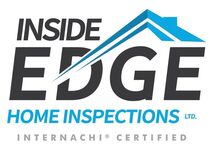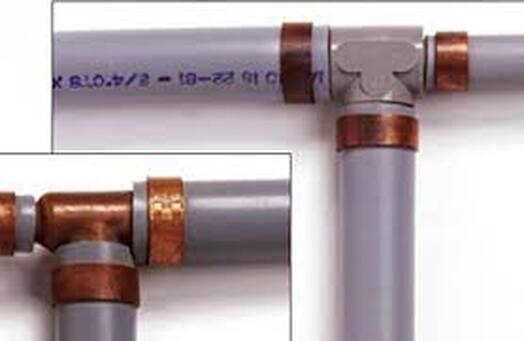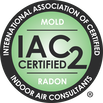Mike's Home Inspector BlogMichael Burfitt |
|
I am now entering my third year running an independent home inspection company and what a fun ride it has been! I can now confidently say that every home is different, no two homes are alike and one of the most exciting parts of being a home inspector is discovering something new. It is always fun to see a unique feature of a home and to see things that we previously have only seen during training.
However, there are some things that are the same on every inspection and while no two inspector’s skill or background is the same there are some things every inspector should know. It always comes off as a shock when I tell clients that there are zero home inspection regulations in Nova Scotia, and anyone can legally call themselves a home inspector in a week or two. Here is a sample of some questions a home inspector should be able to confidently answer after every inspection. Does This Home Have Concerning Electrical Issues? While we are not electricians, home inspectors should be able to detect most major electrical issues. They include:
What Are the Major Plumbing Materials? Most homes I inspect use copper pipe to bring service in from the street, cross-linked polyethylene (PEX) for distribution and plastic, and either ABS (black) or PVC (white) for wastewater. An inspector should be aware of materials that may or may not be a concern such as:
Does The Home Have Potential Water Infiltration Issues? There is a common phrase I use which is “water is the #1 enemy of homes” and biggest concern I get called about is moisture and the damage it has caused. A home inspector should know that water has many ways to enter a home and some of the many signs of water damage. Like many home inspectors, I use a number of tools as well as all my senses to look for signs of either active or potential water infiltration into the home. While we don't have X-ray vision and leaks can be very difficult to detect, a home inspector should be aware of the various ways unwelcome ways water can enter a home. These are just some baseline areas that all home inspectors should be able to confidently speak of. While we are generalists, not specialists we should have a strong enough knowledge to identify the majority of home defects. Your inspector should answer these three questions either verbally or in a report. I heard it once said that when cooking or baking, a cookbook is just a starting point to build mastery in the kitchen: true skill comes from building off that book knowledge using skills and experiences. This is also true as a professional home inspector: I have completed a significant amount of textbook reading (I lost count how many I have in my library!) but I know there are times where I disagree with the “book” answer and many fellow home inspectors. One such example is Polybutylene (PB) otherwise known as Poly B supply pipe.
PB was a plastic manufactured between 1978 and the mid 1990s that was touted as the “pipe of the future” for its low cost and ease of installation compared to copper. Despite its many advantages, it was discontinued in 1996 due to allegations the pipes were rupturing and causing significant water damage. Class action lawsuits were filed in the United States with a payout of close to $1 billion. Try doing an online search and you will see plenty of PB horror stories: sounds terrifying, doesn’t it? While all these facts are 100% true, it should be noted that most of the issues originated in the southern United States, where supply pipes can be run through an extremely hot attic. Furthermore, most of the PB issues occurred at joints, which were often poorly made with plastic fittings by plumbers unfamiliar with their installation. In my experience, the PB systems I have inspected in the Halifax area are usually high quality with copper fittings (like the smaller of the two pictures below). My own home has PB throughout and I have no concerns whatsoever about its potential for leakage over any other type of material. Plumbers I have spoken with over the years have informed me that PB failures are rare, and they generally do not recommend replacement of a PB system that has no evidence of leaks. Having said all that, it’s not a system without problems: it can be damaged by heavily chlorinated water (I know from firsthand experience how chlorinated the water was in Dartmouth before 1999), there is no way to verify that PB is not damaged without invasive testing and some insurance companies look negatively on a home with PB and may charge higher premiums accordingly. So, how do you know if you have PB? Aside from the obvious answer of calling us at Inside Edge Home Inspections if you live in the Halifax region, there are two telltale signs:
Don’t mistake this post as an endorsement of PB: it was no longer considered an acceptable plumbing material in 2005 and is inferior to both copper and other similar types of plastic-based plumbing like cross-linked polyethylene (commonly known as PEX) or chlorinated polyvinyl chloride (CPVC). It is my opinion based on my professional experience that while PB should be monitored for leaks (like any plumbing system), an expensive re-plumbing of a home is rarely necessary. Can a PB system fail without warning? Yes, it can but so can any type of water supply line. Did you know that your home has at minimum, not one but two plumbing systems that need to be kept completely separate? They are:
Most homes in the Halifax core are connected to Halifax Water and one of its 2 large (Pockwock & Lake Major) supply plants. It is supplied to homes in various pipes with the biggest concern being lead pipes. If your home was built before 1960 and is located on the Halifax peninsula or Dartmouth inside Highway 111 there is a chance you have lead pipes and should have them inspected. Other concerns for the home inspector are homes that use the following types of supply pipe: Galvanized Steel The main issue with this type of supply pipe is its age. As it has not been widely manufactured for over 60 years, the 40-to-50-year life expectancy has long since passed. The other main problem with this type of plumbing is that they will rust from the inside out, leading to low pressure, rusty water, and ruptured pipes. These pipes should be replaced as soon as possible. Polybutylene (PB) and/or Kitec (PEX-AL-PEX) There have been large class action lawsuits field against the manufacturers of both products alleging that they have an unacceptably high failure rate. While the internet is full of horror stories in my experience there have been very few problems with both types of pipe here in Canada and are usually the result of poor fittings. The main concerns are that if these pipes fail, they tend to catastrophically burst rather than leak and that some insurance companies refuse to insure homes with these types of pipes without some form of mitigation, up to complete replacement. I touched upon Kitec in a previous article and this type of piping is usually used in heating systems with PB a popular choice for water supply in the 1990s. With all that out of the way, what is a good type of pipe to use? Generally, two main types are used today: Copper (usually Type L) and Plastic (usually PEX or Cross-Linked Polyethylene). There are pros and cons to all these types of piping and a qualified contractor can advise on the best option for your home. It is very important that supply piping be kept separate from DWV piping as this can lead to serious, even fatal cross contamination. The biggest issue I see is homeowners leaving garden hoses connected when not in use: this can lead to outside water being drawn into the potable water supply and they should be disconnected when not in use. |
Archives
July 2024
Categories
All
|
|
Inside Edge Home Inspections Ltd.
Halifax, NS 902-209-9921 [email protected] Proudly Serving the HRM & Central Nova Scotia |


 RSS Feed
RSS Feed

